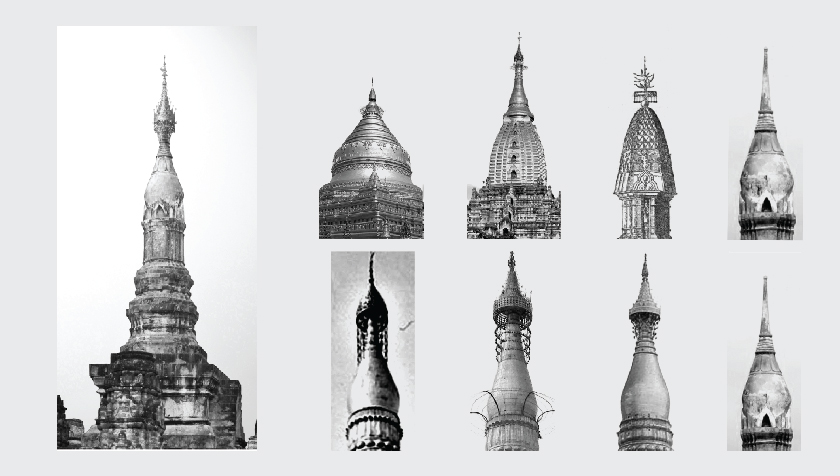
ข้อสันนิษฐานเพิ่มเติมและประเด็นใหม่เกี่ยวกับเจดีย์ทรงยอดพุ่มข้าวบิณฑ์
Further Research into the Lotus-bud Style Chedi of Thailand
โดย วรารักษ์ ชะอุ่มงาม / By Wararak Cha-umngarm
Damrong Journal, Vol 14, No.1, 2015
บทคัดย่อ:
บทความนี้เป็นการศึกษาต่อยอดข้อมูลทางวิชาการและทบทวนการวิเคราะห์รูปแบบศิลปกรรมของเจดีย์ทรงยอดพุ่มข้าวบิณฑ์ใหม่อีกครั้ง
เพื่อคลี่คลายข้อสงสัยในประเด็นต่างๆที่ยังคงปรากฏอยู่บนเจดีย์ทรงยอดพุ่มข้าวบิณฑ์ที่ยังไม่ได้รับการวิเคราะห์ให้เกิดความกระจ่างชัด
ซึ่งในประเด็นแรกเป็นการศึกษาความหมายและแนวคิดในการออกแบบเจดีย์ทรงปราสาทยอด
โดยนำมาเปรียบเทียบกับรูปแบบศิลปกรรมของเจดีย์ทรงยอดพุ่มข้าวบิณฑ์จนได้ข้อสรุปว่า เจดีย์ทรงยอดพุ่มข้าวบิณฑ์เป็นเจดีย์ทรงปราสาทยอดในศิลปะสุโขทัยและในประเด็นที่สองเป็นการนำเสนอประเด็นใหม่เกี่ยวกับที่มาของยอดพุ่มข้าวบิณฑ์
สืบเนื่องจากผลการวิเคราะห์รูปแบบศิลปกรรมและความสัมพันธ์ของข้อมูลทางประวัติศาสตร์
ที่ได้แสดงให้เห็นว่าเป็นการรับอิทธิพลทางศิลปกรรมจากปลีของเจดีย์ในศิลปะมอญ โดยสอดคล้องกับช่วงเวลาที่พระภิกษุจากเมืองมอญได้รับอาราธนาเพื่อมาฟื้นฟูพระพุทธศาสนาในกรุงสุโขทัยประมาณต้นพุทธศตวรรษที่
๒๐
ABSTRACT:
This article aims to further the academic knowledge and the analysis of the Lotus-budstyle chedi of Thailand. The research resolves questions of the Lotus-bud style chedi that are still outstanding and which have not been properly analyzed. The paper firstly looked at the meaning and concept of the design of the prasat stylechedi by comparing it with the Lotus-bud style chedi and concluded that it is one kind of prasat style chedi in Sukhothai Art. Secondly, the paper examined some new issues in relation to the origin of the Lotus-bud in the Lotus-bud style chedi. The research was based on the analysis of artistic styles and the relationships to historical information which showed that the pattern was influenced by the banana bud of the Mon style chedi. This corresponds to the time when the monks of the Mon kingdom were invited to join the Buddhist revival in Sukhothai Kingdom, during the early 20th Buddhist century.











